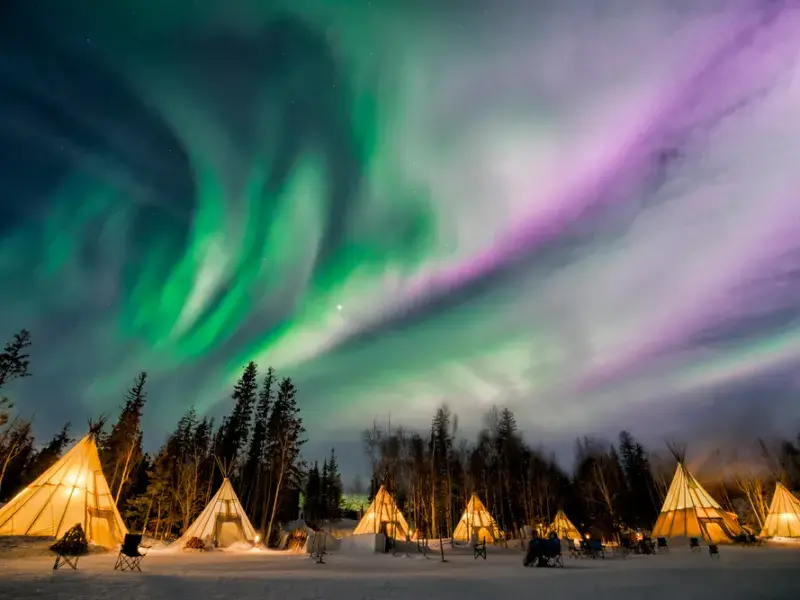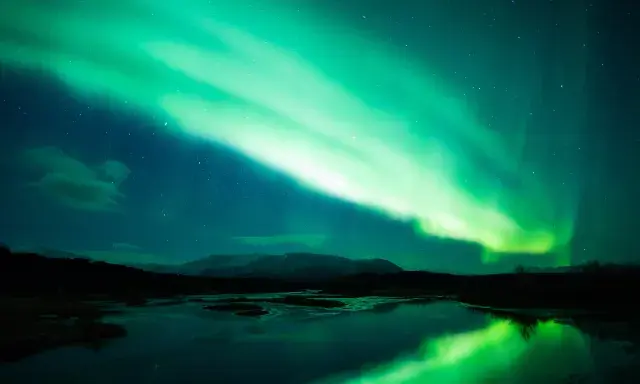Chasing the Northern Lights: Best Places to See the Aurora Borealis in January
- Kari Lynn
- Dec 22, 2024
- 3 min read
The Aurora Borealis, or Northern Lights, is one of nature’s most awe-inspiring spectacles. Dancing ribbons of green, pink, and purple light illuminate the dark winter skies, creating a breathtaking experience. January is an excellent time to chase the aurora, as the long nights and crisp air provide the perfect backdrop for this celestial show. If seeing the Northern Lights is on your bucket list, here are some of the best destinations to witness this magical phenomenon.
1. Tromsø, Norway: The Gateway to the Arctic

Known as the “Capital of the Arctic,” Tromsø is one of the top destinations for chasing the Northern Lights. Situated above the Arctic Circle, the city offers prime aurora viewing along with vibrant cultural experiences.
• Why January?
January’s long, dark nights are ideal for aurora viewing, and the snow-covered landscapes add to the magic.
• Best Spots to See the Lights:
• Kvaløya Island: Just outside Tromsø, this remote area provides unobstructed views of the night sky.
• Lyngen Alps: A dramatic backdrop of mountains and fjords enhances the spectacle.
• Other Activities:
• Dog sledding and reindeer sleigh rides.
• Visiting the Arctic Cathedral or Polar Museum.
• Taking a fjord cruise under the stars.
• Tips:
Book an aurora tour with experienced guides who know the best viewing locations based on weather conditions.
2. Reykjavík, Iceland: A Land of Fire and Ice

Iceland’s rugged landscapes, geothermal wonders, and northern latitude make it a prime destination for aurora chasers. Reykjavík, the country’s capital, is easily accessible and offers a mix of natural beauty and cultural charm.
• Why January?
The long nights of January provide ample opportunities for aurora hunting, and the chance of snowfall adds to Iceland’s winter wonderland appeal.
• Best Spots to See the Lights:
• Thingvellir National Park: A UNESCO World Heritage Site, this park offers stunning views away from city lights.
• Grótta Lighthouse: Just a short drive from Reykjavík, this coastal spot is a favorite for locals and tourists alike.
• Other Activities:
• Relaxing in the Blue Lagoon while watching the lights.
• Exploring ice caves and glacier hiking.
• Touring the Golden Circle and its geysers and waterfalls.
• Tips:
Rent a car and drive to remote areas for better visibility, or join a guided Northern Lights tour.
3. Yellowknife, Canada: Aurora Capital of the World

Located in Canada’s Northwest Territories, Yellowknife is often referred to as the “Aurora Capital of the World.” With minimal light pollution and a high frequency of clear skies, it’s one of the most reliable places to see the Northern Lights.
• Why January?
The extreme cold of January contributes to crystal-clear skies, and the aurora is visible almost every night.
• Best Spots to See the Lights:
• Aurora Village: A dedicated viewing area with teepees and heated seating for comfort.
• Great Slave Lake: Frozen in winter, the lake offers expansive views of the aurora.
• Other Activities:
• Ice fishing on Great Slave Lake.
• Snowmobiling through the vast wilderness.
• Visiting local Dene Indigenous communities to learn about their culture and aurora legends.
• Tips:
Dress in layers to handle the extreme cold, and consider staying in a glass-roofed igloo for uninterrupted aurora viewing.
4. Abisko, Sweden: A Photographer’s Dream

Though not in the title, Abisko in Swedish Lapland deserves mention for its stunning views of the aurora. Located in the Aurora Oval and shielded from cloud cover by its unique geography, Abisko offers excellent viewing conditions in January.
• Best Spots: The Aurora Sky Station provides an elevated, remote location ideal for aurora photography.
Tips for Northern Lights Viewing
1. Timing Is Key:
The best time to see the Northern Lights is between 10 PM and 2 AM. Stay up late and keep an eye on aurora forecasts using apps like My Aurora Forecast or websites like the Geophysical Institute’s Aurora Tracker.
2. Find Darkness:
Head away from city lights to improve your chances of seeing the aurora. National parks, open fields, and isolated locations are your best bet.
3. Be Patient:
The aurora is unpredictable. It may take hours of waiting in the cold, but when it appears, it’s worth every minute.
4. Bring the Right Gear:
• Warm clothing: Layers, thermal gear, and insulated boots are a must.
• Camera: Capture the magic with a DSLR camera and tripod.
Why January Is Perfect for Aurora Chasing
January offers the trifecta for Northern Lights viewing: long nights, crisp air, and minimal crowds. Combined with snowy landscapes and a sense of adventure, it’s the ideal time to witness the aurora in its full glory.
Whether you’re marveling at the lights above a Norwegian fjord, soaking in a hot spring in Iceland, or standing on the frozen expanse of a Canadian lake, chasing the Northern Lights is an unforgettable experience. So pack your bags, bundle up, and get ready for a celestial adventure you’ll never forget!
Comments